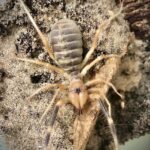Other spiders here but I also sell Tarantulas.
So why Other Spiders?
Well Tarantulas are a type of spider but quite different from most in several ways.
For example –
- Tarantulas are usually larger than most others.
- Tarantulas have two or four silk exuding tube-like structures(spinnerets) but others have six.
- Tarantulas are always hairy bodied but not all spiders are.
- Tarantulas produce silk for carpeting the floor of the nest and make hammock-like bedding for resting whereas others make webs to capture their prey.
- Silk producing glands in the feet are unique for the tarantulas.
- Presence of barbs on the fleshy abdomen is a distinguishing feature of tarantulas.
- The lifespan for tarantulas is very high compared to spiders.
This is a short list of the similarities between mygalomorphs – an infraorder of spiders to which tarantulas belong – and araneomorphae (true spiders).
- Eight legs
- Fangs
- Venom glands (although not all)
- Spinnerets
- Silk spinning
- Two body regions
- Male palpi
Tarantulas will use silk to line the walls of their burrows, spin a ‘door’ to the burrow to keep predators out or use it as a tripwire that will either alert them to unwanted visitors.
Presence of barbs on the fleshy abdomen is another distinguishing feature of the tarantulas.
Tarantulas have strong jaws and fangs. Their fangs are parallel and face downward – like Dracula – meaning they can only bite top down. When not in use, tarantulas tuck their fangs under their bodies.
True spiders, on the other hand, have fangs that face each other and will swing to the side and open up when they are ready to strike. A true spider’s fangs are much more flexible.
Tarantulas on Wikipedia

